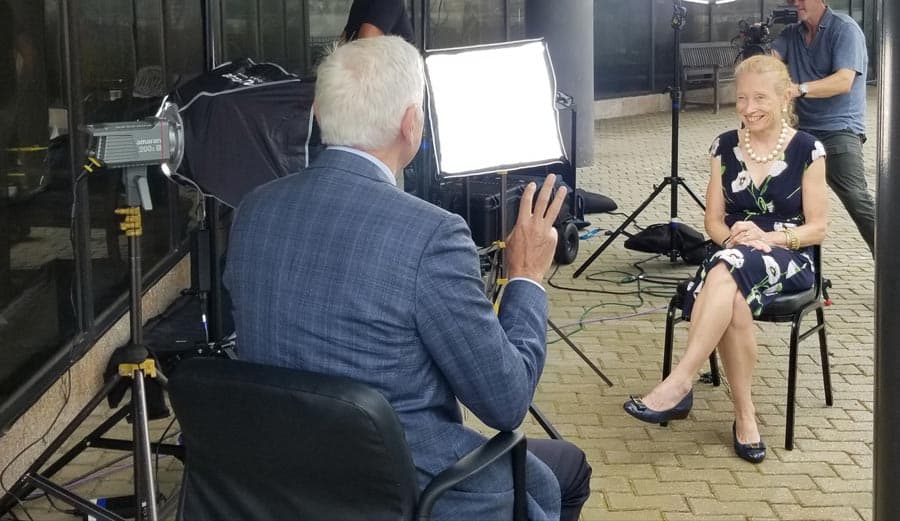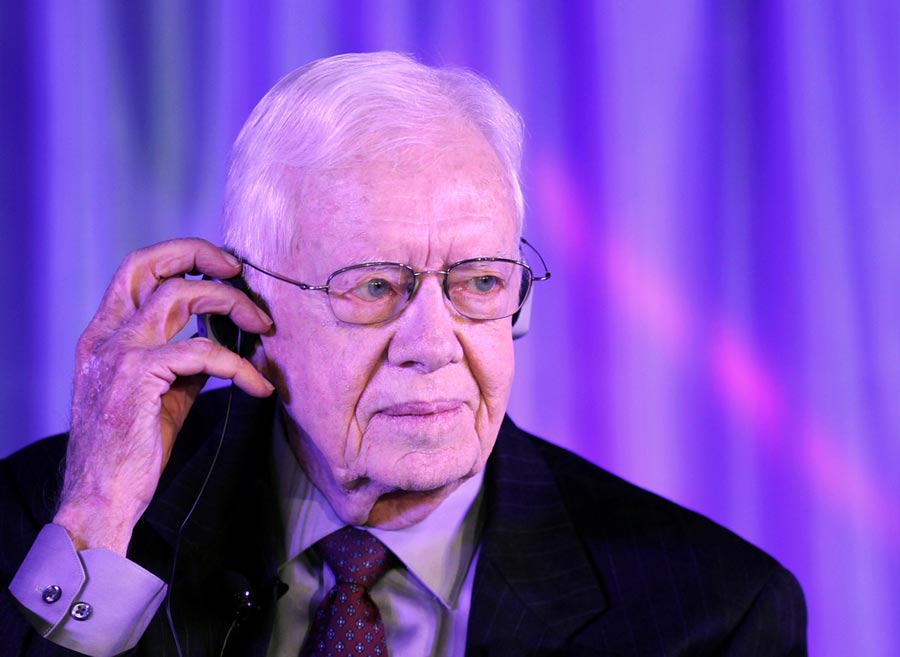Please view our updated COVID-19 guidelines and visiting procedures →.
Connecticut Hospice recently took center stage in a CBS News segment of Eye on America, shedding light on how home hospice care is evolving to provide compassionate support for the nation’s aging population.
In the segment, Chief Medical Correspondent Dr. John LaPook explores how home hospice care is transforming lives, highlighting stories like that of Joan, a 98-year-old Connecticut Hospice patient. The segment also emphasizes the growing recognition of home hospice care as a powerful way to improve quality of life for those in their final months — including former President Jimmy Carter, who just turned 100.
For many, the word "hospice" brings to mind misconceptions and fear. It's often assumed that hospice signifies the end of life, limited to a hospital setting. However, as Joan shares in her interview with Dr. LaPook, this isn’t necessarily the case.
“When you heard the word hospice, what did that mean to you?” Dr. LaPook asks. Joan responds candidly, “I thought that unless you were really infirm... you wouldn’t be a candidate for hospice. But it turns out not to be true.”
Hospice care focuses on providing comfort, dignity, and an improved quality of life for patients expected to live six months or less. It aims to reduce pain and manage symptoms rather than pursuing curative treatments. Yet, the care doesn't signify that death is imminent; rather, it offers support to help patients live their final months with as much comfort and purpose as possible.

In the Eye on America segment, Barbara Pearce, CEO of Connecticut Hospice, provides insights into the decision-making process of entering hospice care. In the interview, Dr. John LaPook asks, “It’s really hard to predict how long somebody has to live — who makes the decision" to enter hospice care? Barbara responds, “The patient. The patient and their families.”
This exchange underscores the patient-centered approach of Connecticut Hospice, which emphasizes the importance of choice and family involvement in the hospice journey. Nearly 99% of Connecticut Hospice patients choose to receive care at home, surrounded by the people and environments that mean the most to them. Like former President Jimmy Carter, Joan chose to receive care in the comfort of her Connecticut apartment, where she continues to live a meaningful life.
Through personalized care plans, our healthcare professionals work closely with patients and their families to understand their goals and support them in finding comfort, dignity, and fulfillment during their time in hospice care.
The video features Joan, who at 98 years old, still cooks and navigates her apartment with relative ease. Her refrigerator is well-stocked, and she enjoys the small pleasures of daily life. However, she also benefits from the support of hospice staff and other visitors who help keep her safe, engaged, and connected.
In Joan’s words, the support of hospice care has allowed her to look forward to important moments in her life, especially time with her eight grandchildren. “Initially, I thought it was the beginning of the end,” she says. “But I’m not through yet.”
Hospice care isn't just about preparing for the end of life; it's about living life fully until the very last moment. Patients are supported by a team of trained professionals who offer medication, treatments to relieve symptoms, and emotional support tailored to their individual needs and desires. The goal is to enhance comfort and provide a meaningful experience during a time that can be both challenging and precious.

Despite the benefits, only about half of eligible Medicare patients take advantage of hospice care, in part due to misconceptions about what it entails. Routine hospice services average about $200 a day and are covered by Medicare, Medicaid, and most private insurance plans, making it a financially accessible option for many families.
Former President Jimmy Carter’s public announcement of his decision to enter home hospice care has helped bring the conversation to the forefront, encouraging others to view it as a viable and positive option. “He’s given everybody permission to consider that as a reasonable option,” says Barbara Pearce. “It doesn’t shorten their life but does increase their comfort and fulfillment.”

The essence of hospice care is to give patients the opportunity to live their remaining time with dignity, comfort, and fulfillment. At Connecticut Hospice, we are dedicated to helping patients create meaningful moments and lasting memories, surrounded by the people who matter most. Whether through Hospice Care at Home or Inpatient Hospice Care at our Branford Waterfront Hospice Hospital, we strive to provide compassionate support tailored to every individual's needs. Joan's story is a powerful testament to how hospice care can transform the end-of-life experience into a time of connection, comfort, and joy.
If you or a loved one are considering hospice care, remember it’s not just about preparing for the end — it’s about making sure the life that remains is lived to the fullest. At Connecticut Hospice, we are here to guide and support you every step of the way.
To learn more about our services or to speak with a member of our compassionate team, please contact us. We are committed to making a difference, just as we have for Joan and countless others.
This post was inspired by the Eye on America segment featuring Dr. John LaPook on CBS News.

As a not-for-profit, we depend on generous donors to help us provide customized services and therapies that aren’t completely covered by Medicaid, Medicare, or private insurance.
Please make a gift to help us sustain the highest standard of care.
Admissions may be scheduled seven days a week.
Call our Centralized Intake Department: (203) 315-7540.